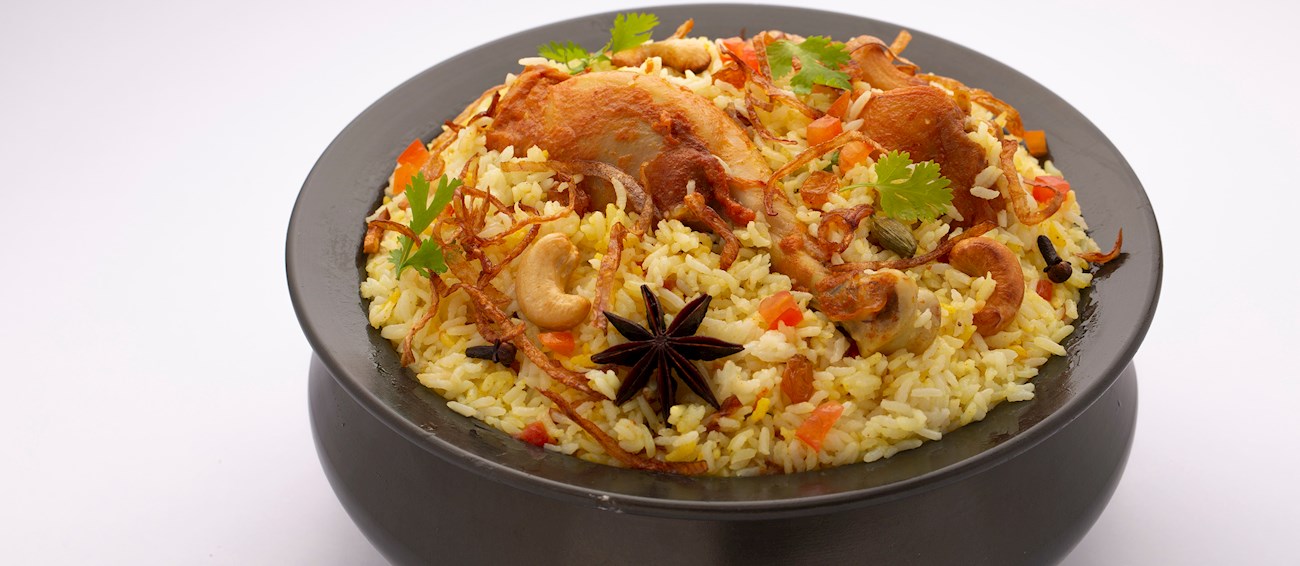Thalassery biryani is a type of biryani that hails from the town of Thalassery in the Indian state of Kerala, located on the Malabar coast. It uses a specific short-grain and aromatic rice called kaima rather than the long-grain basmati rice commonly used in many biryani dishes.
This rice is native to the region and contributes a unique flavor and aroma to the dish. Unlike the traditional "dum" cooking method, where partially cooked rice and meat are layered and cooked together, in Thalassery biryani, the rice and meat are cooked separately before being layered and baked together.
Malabar chicken biryani is a special style of biryani that originates from the Malabar region in India's state of Kerala, located along the country's southwestern coast. What's really special about it is the use of aromatic, short-grain rice kaima, which provides a distinctive texture and taste.
The chicken in this biryani is marinated in spices and dahi, infusing it with a deep, succulent flavor. The blend of aromatic spices like star anise, cloves, cinnamon, and fennel seeds gives this biryani its unique, mildly sweet profile. Malabar chicken biryani is traditionally prepared "dum" style, which involves layering partially cooked rice and marinated chicken in a pot, sealing it, and then letting it slow-cook over a low flame.
Malabar biryani is a special style of biryani that originates from the Malabar region of India, which is located along the southwestern coast of the country in the state of Kerala. What sets Malabar biryani apart is its distinctive flavor profile and ingredients.
It's usually milder and less spicy than other biryani types and has a sweet and aromatic flavor. Unlike most other biryani types, which use basmati rice, Malabar biryani typically uses a local, short-grained, fragrant variety of rice known as kaima.
TasteAtlas food rankings are based on the ratings of the TasteAtlas audience, with a series of mechanisms that recognize real users and that ignore bot, nationalist or local patriotic ratings, and give additional value to the ratings of users that the system recognizes as knowledgeable. TasteAtlas Rankings should not be seen as the final global conclusion about food. Their purpose is to promote excellent local foods, instill pride in traditional dishes, and arouse curiosity about dishes you haven’t tried.












